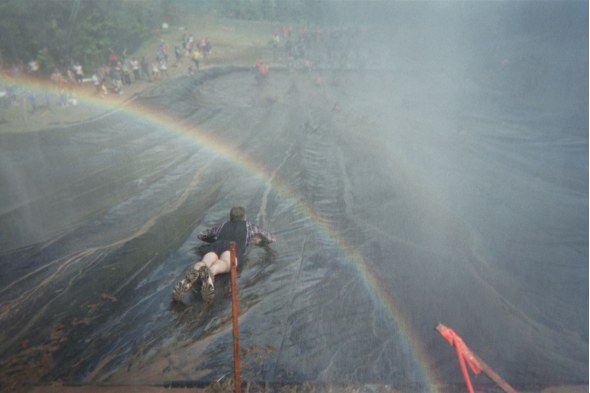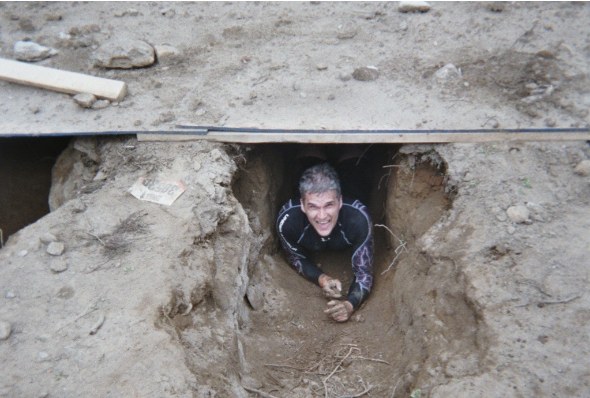Here’s something that took me a while to figure out: Tough Mudder was, for me, about 75% mental. Yes, the hills were a lot of work. And some of the obstacles were physically challenging if not impossible for me at my level of ability, like Hangin’ Tough and Funky Monkey.
But a lot of the other obstacles, when you step back and look at them, aren’t that grueling. Jumping into a pool of (not ice cold) water? Crawling through a tunnel? Going into the event, I thought they were just things to slow you down, and almost provide a break from the running.
And they were, for some people. But for others, who maybe have some fears or hangups about enclosed spaces, heights, or the unknown, they were the hardest parts of the course.
Here’s the thing: willpower is like a battery. Numerous studies have shown that we only have so much self discipline, and the more we use up, the less we have for later in the day. These studies have fascinated me for a while, and they usually involve having someone do tough math problems or keep their hands submerged in ice water, and then choose either a plate of cookies or fruit (harder problems lead to more cookie choices.)
Basically, if we use our willpower on task A, we won’t have much left for task B. Some theorize that we can mitigate this by taking regular breaks, so 50 minutes of work followed by 10 minutes of “active recovery” will yield better results than just pushing straight through consecutive hours.
In Tough Mudder, you’re looking at several hours of stress in a row, with no real breaks (you can stop for a rest, but there’s not much escaping this environment.) Under these conditions, willpower depletion can be massive, and that’s where the obstacles come in.
For me, I had to “work” hardest to simply start the Mud Mile and Walk the Plank. I’m still not sure why Mud Mile was so hard; probably I just didn’t think that I was going to make the leap across the first chasm (ours didn’t have that much mud to walk through; it was more about leaping deep and wide ditches.) Walk the Plank is a more obvious fear. Looking 12 feet down (17 if you include body height) can be intimidating!
So whether you’re jumping from a high height into muddy, possibly freezing water, facing fear of heights…

Or slithering through an underground tunnel that’s barely wide enough for your shoulders, facing claustrophobia…
Or just launching yourself into the world’s craziest slip & slide, facing fear of losing control…

(and don’t get me started about the electric shocks!)
Under the exhausting conditions of Tough Mudder, these actions can be incredibly daunting, and there’s no way to adequately explain it to Bob from accounting the following week.
The trick, really, is to embrace your inner four year old and remind yourself constantly to have fun. Because it’s tons of fun, and you’ll realize it when you’re through it but getting to the end is so much easier if you keep that in mind from the very first step.
Tying this back to my upcoming marathon, I’m lucky that I only have to do one activity, albeit for a very long time. My concern is that my willpower will erode over the course of the race, and each step will be harder to take than the one before it. I don’t have a solution to that yet, but I’m thinking a lot about the mindset I’m going to want to adopt for each quarter of the race. “Have fun” will probably enter some of it, but I still need to come up with some kind of “make it no harder than it has to be” system. Fingers crossed!
Photo Credit: Gareth Ledger
